Your Brain on Event Sound: How Audio Triggers Emotion, Memory, and Movement
Event sound is more powerful than you think. Have you ever heard an old song and been transported—maybe one you hadn’t listened to in years—and suddenly, without warning, you were somewhere else?
In fact, not physically, of course. But in your mind… you were back in that small kitchen in your childhood home, or on a long road trip with your friends, or dancing at your cousin’s wedding when life felt perfect for just a moment. Maybe your body responded before your brain caught up—your shoulders swayed, your fingers tapped the table, your chest tightened slightly with a familiar ache. Music does that.
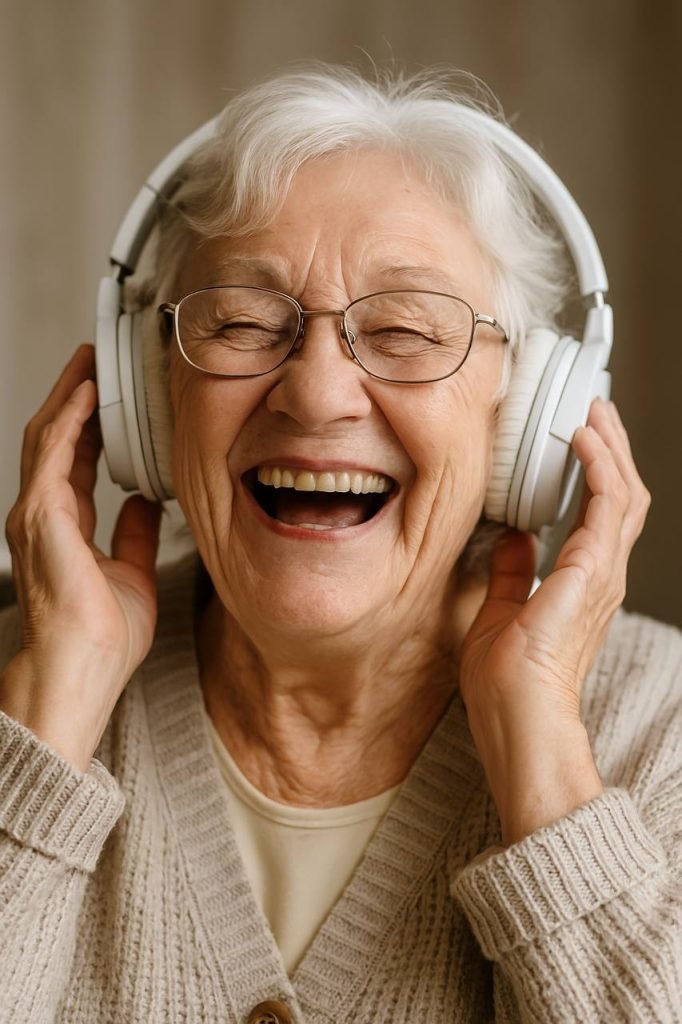
It’s not magic. It’s science.
Studies published in Nature Neuroscience and Frontiers in Psychology show that music activates more areas of the human brain than any other sensory input. The emotional center, the memory center, the motor cortex—they all light up. This is why music doesn’t just accompany memories—it stores them. As a result, music becomes a powerful emotional anchor.
However, here’s the catch: sound quality matters.
In contrast, that same nostalgic song played through a cracked Bluetooth speaker or a dusty old boombox? It might bring a smile, sure—but it won’t carry you. It won’t lift you out of the present and place you in the past. Its sound is too thin, too brittle, too distant. But put that same song through a clean, balanced, professional system—like in a luxury car with a tuned audio setup—and suddenly you’re gone. Transported. You are no longer in a room. You are in a moment.
And that moment is priceless.
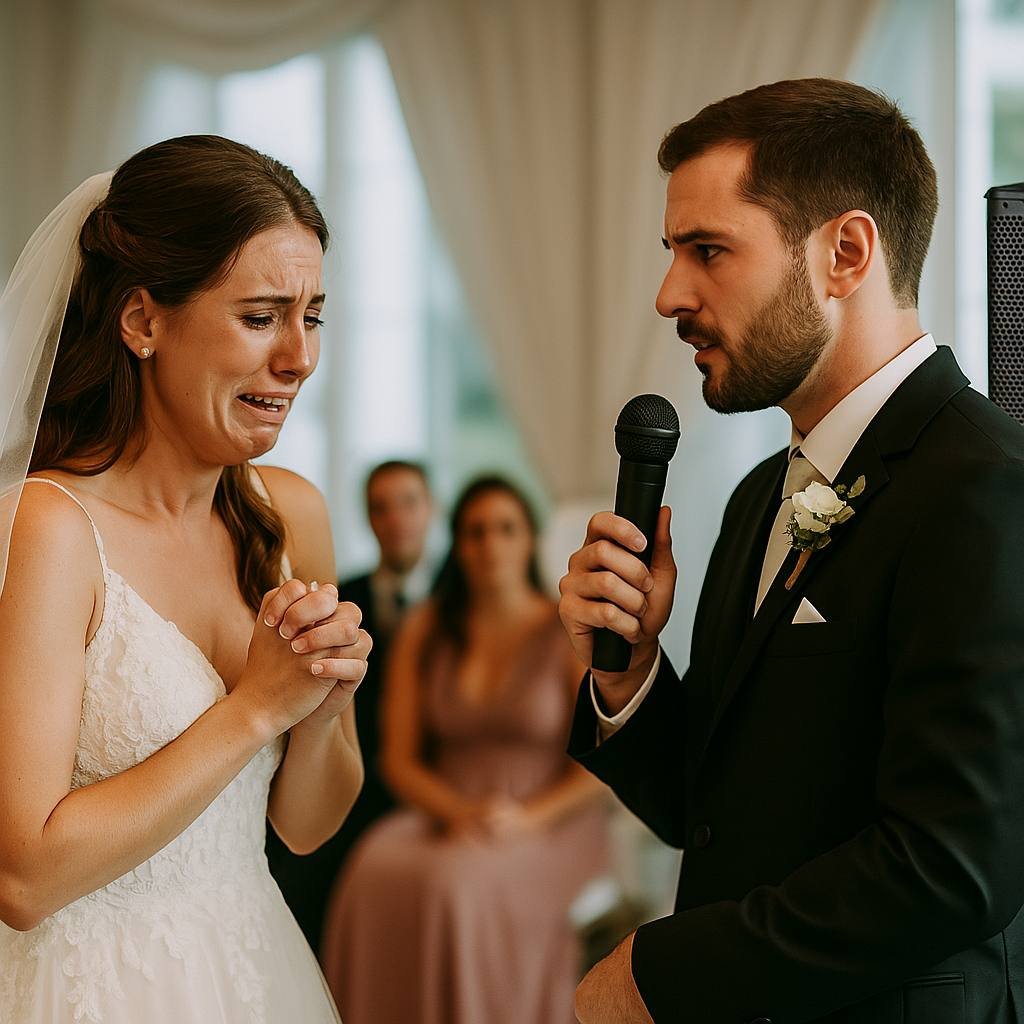
Now let’s ask the hard question: why do so many people ignore this reality when planning the most important days of their lives?
They think about flowers. About food. About lights, chairs, seating charts. They will spend hours comparing fonts on the invitation. And what about the music? Sound setup? The microphone their grandmother will use to give her speech? Barely a second thought.
According to AV Productions, poor sound quality can negatively impact the experience of up to 50% of event attendees, while clear, well-balanced audio can increase audience engagement by up to 40% and make the entire production feel significantly more professional.
That’s the disconnect. That’s what we need to change.
Because no one remembers the dessert table.
But they will remember the moment they screamed the chorus of their favorite song with 80 people at midnight, and the event sound wrapped around them like a second skin.
The Silent Killers of Event Sound: Common Audio Mistakes You Don’t Notice—Until It’s Too Late
Not every event fails because of bad food or awkward speeches. Some fail quietly. Invisibly.
Not in what people say — but in what they stop doing.
Like dancing. Singing. Laughing.
Or paying attention.
Most people don’t realize it at the time, but poor event sound slowly shuts down a room. A wireless mic drops in and out during a speech. The music sounds harsh and distorted. The bass disappears in one part of the room and booms like thunder in another. People start to fidget. Conversations start. At that point, the moment… slips away.
These are what we call “silent killers” — issues that don’t seem dramatic, but erode the emotional core of your event.
For instance, let’s get specific:
• A bride begins her vows, but her voice crackles through a budget mic with a dying battery. People squint, lean forward, whisper “what did she say?”
• A DJ is playing the perfect track, but the speakers don’t cover the back of the hall. Half the guests look bored, the other half shout to compensate.
• At a corporate gala, the keynote starts — and the Bluetooth speaker auto-disconnects because someone walked outside with the phone.
Instead of just loudness, it’s about event sound, consistency, coverage, and clarity.
In other words, sound is what carries emotion from the stage to the soul. When it breaks — even for 10 seconds — the entire atmosphere collapses.
As highlighted by Shure and AVIXA, two leading authorities in pro audio and live event experiences, sound quality is one of the most overlooked factors in event planning — yet one of the most critical for emotional engagement. When the audio fails, connection is lost.
For example, want to test this? Go to a wedding where the DJ uses small portable speakers for 120 guests. Watch how people in the back start texting. How toasts get ignored. How the dancefloor barely gets warm. Then go to another where full-range speakers and subwoofers are tuned to the space. Watch the difference in energy.
The lesson is simple: People don’t notice great sound. But they absolutely notice when event sound is missing.
Why Your “Loud” Speaker Still Sounds Like Trash: A DJ’s View on Real vs Fake Power

Let’s get real.
Most people think a speaker is “good” if it’s loud.
But loud is the easiest part to fake. You know what’s hard? Clarity under pressure. Fullness without fatigue. Coverage without chaos.
See, consumer speakers cheat. They boost the mids, compress the output, and roll off the bass to trick your ears into thinking it’s “punchy.” The result? It sounds decent in your bedroom — but in a hall with people talking, moving, and expecting to feel the music? It collapses.
As a result, try pushing a PartyBox or any similar Bluetooth system past 90 dB SPL for two hours. Then the highs start to hiss. The bass starts breathing like it’s dying. You’ll hear breakup on transients — claps, kicks, vocals — because those speakers have no transient response, no real headroom, and no airflow management.
On the other hand, now put a 12” or 15” pro speaker like the EV ELX115P next to it.
It’s not just about getting louder.
What you’re really getting is:
• A 1.5” high-frequency driver that doesn’t sizzle at 8kHz
• Cabinet tuned with proper phase alignment between woofer and horn
• A crossover that doesn’t just “cut” frequencies — it balances them dynamically under DSP
Need to tame a boxy room? EQ at 250 Hz does the trick.
Harshness at 3.2kHz? You can smooth it out with precision.
And with an 8ms delay on the rear fills, the dancefloor stops slapping itself with echoes.
You’re not fighting the system — you’re shaping the sound.
And don’t even start on subs.
People rent two 12” tops and wonder why their guests aren’t dancing. Because bass isn’t about loudness — it’s about presence. You need that 35–40Hz rumble that lifts shirts and locks bodies in motion.
And unless you’re running a real sub with a real crossover and real gain structure, you’re just making noise.
True power isn’t just SPL.
It’s usable power — consistent, clean energy across the spectrum, under any condition, for hours.
Here’s the difference: a room full of chatter and a room full of movement.
You feel it the second you walk in.
And more importantly, your guests do too.
Sound Doesn’t Just Play — It Behaves: Why Space Can Make or Break Your Audio
Let’s be blunt:
When planning your event sound, it doesn’t matter how good your gear is if you ignore the room.
Sound doesn’t just travel in a straight line and disappear.
It bounces, builds, cancels, smears, drowns, and sometimes vanishes entirely.
And every space — every venue, backyard, tent, or conference room — is a minefield of acoustic chaos if you’re not prepared.
Ever played in a gymnasium with concrete walls and high ceilings?
Welcome to 3 seconds of reverb on every syllable.
You hit play on a crisp track, and suddenly it sounds like it’s coming from inside a water tank.
Then you move to a carpeted basement.
Everything is dead. Bass gets sucked out. Vocals feel like they’re whispering under a blanket.
Surprisingly, outdoors? You think it’s easier?
Try playing without walls and watch your high frequencies drift into space while your mids fight wind and your lows get swallowed by the grass.
You crank the volume. Still sounds thin. Because volume doesn’t replace reflection.
Real Sound Techs Know the Room Shapes Event Sound
Pro audio isn’t just about equipment — it’s about adapting to space:
• Angle the speakers so they avoid parallel wall slapback.
• Then tune out modal resonance at 120Hz when the stage is near a wall.
• And delay rear fills so people in the back don’t hear vocals twice.
• You use cardioid sub configurations to avoid muddy backwash on stage.
Additionally, even the placement of a single mic matters.
Put it in front of a pillar — you’ll get standing waves.
Too close to a corner? You’ll get low-end boom you didn’t plan for.
Pros walk the room before they plug in. They clap. They speak. They listen.
Because your rig doesn’t live on paper — it lives in air.
Case Study: Same Rig, Different Rooms — Different Results
DJ A uses the same rig (EV tops and subs) in two venues:
- Ballroom with glass walls, hardwood floor:
Without a limiter and EQ cut at 3.5kHz, it’s harsh and echoing.
People at the front plug their ears. - Outdoor wedding on grass:
Without adding a delay stack for the back rows, half the guests can’t hear the vows.
Same gear. Same DJ. Different results.
Why? Because the space is part of the instrument.
The Golden Rule: Why You Must Shape Your Event Sound—or It’ll Shape You
If you don’t shape the room, the room will shape your sound.
And if you’re not ready for that — you’re not doing sound.
In truth, you’re just playing music at people
Event Sound Is Memory, Movement, and Meaning: Why Good Audio Isn’t a Luxury — It’s the Soul of Your Event
After hours of gear prep, leveling, routing, and fine-tuning — there’s a moment when everything goes still.
The lights drop just a little. Suddenly, the air thickens. And then the first sound cuts through.
That’s when you know:
this isn’t about equipment anymore — this is about impact.
Because sound isn’t just a wave. It’s a key to memory, to the body, to the heart.
It can preserve a moment — or destroy it.
It either lands in the soul or disappears into silence.
Music Triggers More Brain Activity Than Any Other Stimulus
Don’t take our word for it — ask neuroscience.
Studies from MIT, Johns Hopkins, and the University of Helsinki show:
• Music activates the hippocampus, amygdala, motor cortex, and auditory centers — simultaneously
• It can restore memory in Alzheimer’s patients when nothing else does
• A clean, full-frequency sound wave causes a deeper emotional response than compressed or distorted audio. For this reason, investing in professional sound makes emotional sense.
Translation?
You’re not just “playing music.” You’re programming memories — in real time.
But only if the sound is worthy of the moment.
Why Bass Makes People Move — Even When They’re Tired
Suddenly, you’ve seen it.
The room is half-dead. People are seated. Feet hurt.
Then the right sub hits — 38Hz, clean, tight.
And something switches.
Heads nod. Shoulders loosen. People don’t just hear the beat — they feel it through their legs, their chests, their spine.
That’s not mood. That’s biology.
Low frequencies stimulate the vestibular system, responsible for balance and motion.
Even babies dance before they can walk — that’s how strong the pull is.
And a proper sub can wake up a room — no alcohol required.
A Voice, Clearly Heard, Becomes a Core Memory
You mic the groom’s voice wrong — and all she hears is distortion.
You use a cheap speaker — and the “I love you” echoes into nothing.
But when it’s right? When the EQ is warm, the system is balanced, the feedback is gone?
It lands.
Right in the heart. Forever.
Because event sound is the one thing people don’t consciously remember — but never forget.
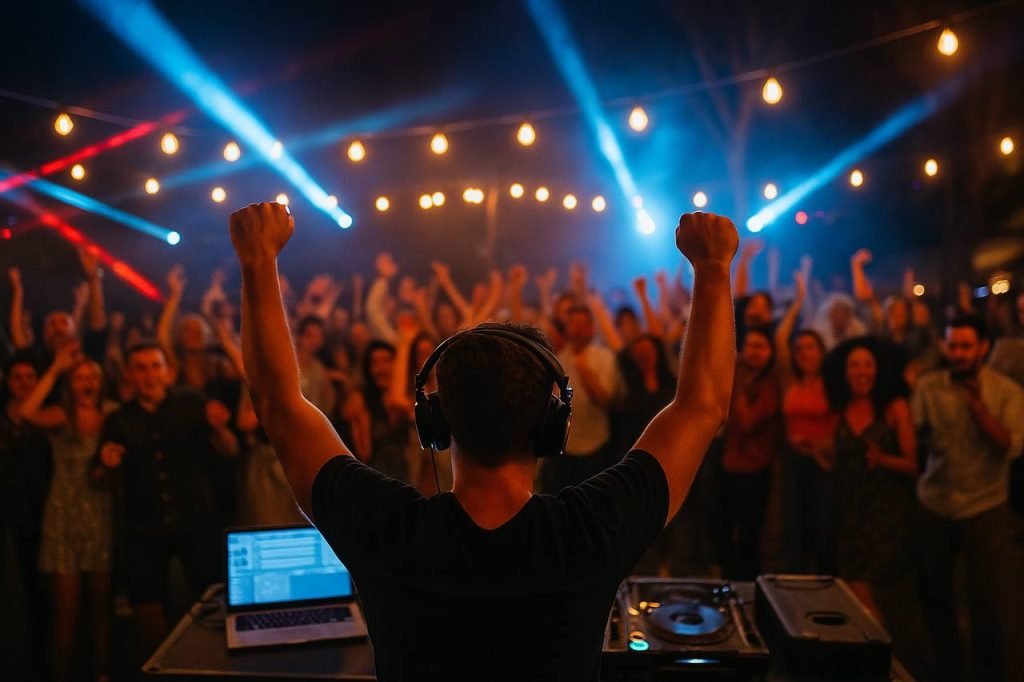
Final Thought
Ultimately, people remember what they felt.
And sound is what delivers that feeling.
Not the flowers. Not the chairs. Not the appetizers.
The way the music hit. The way the voice shook. The way the night sounded.
If you care about your event — you care about the event sound.
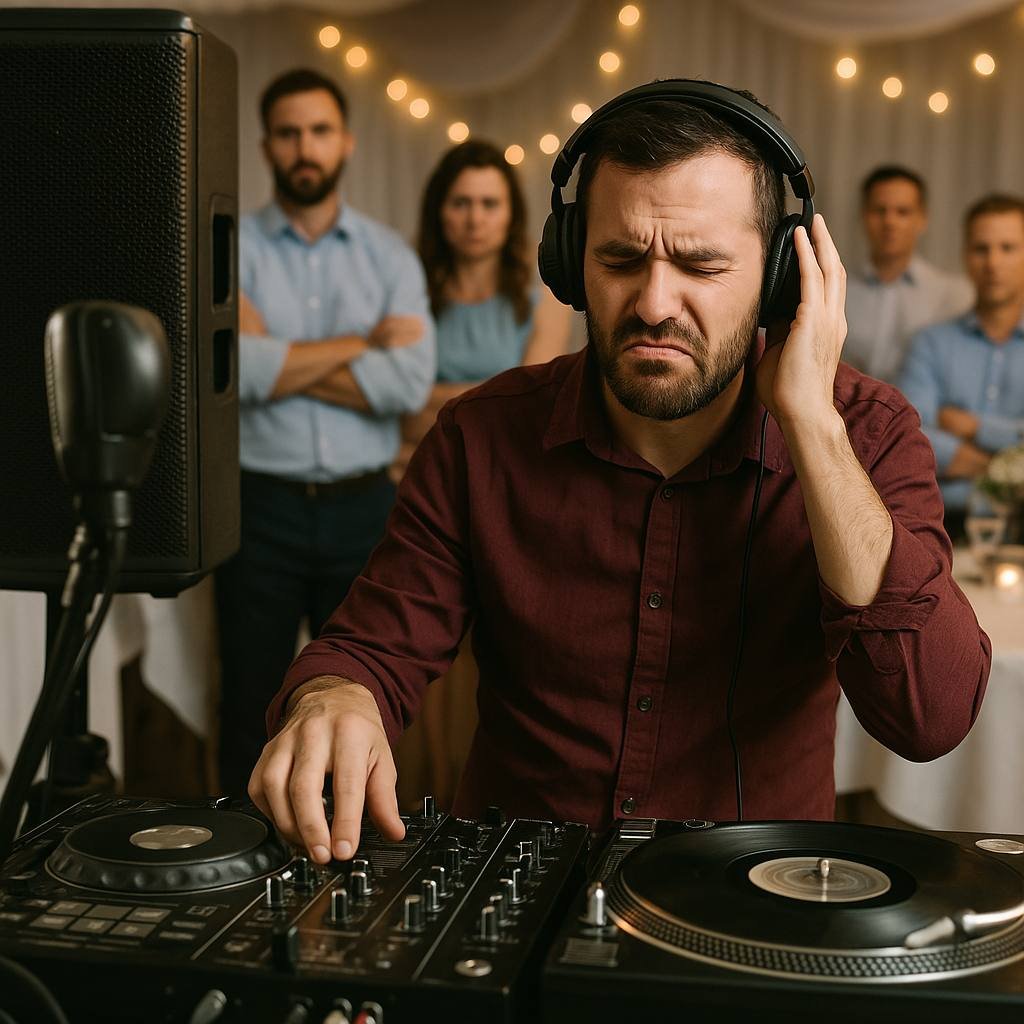
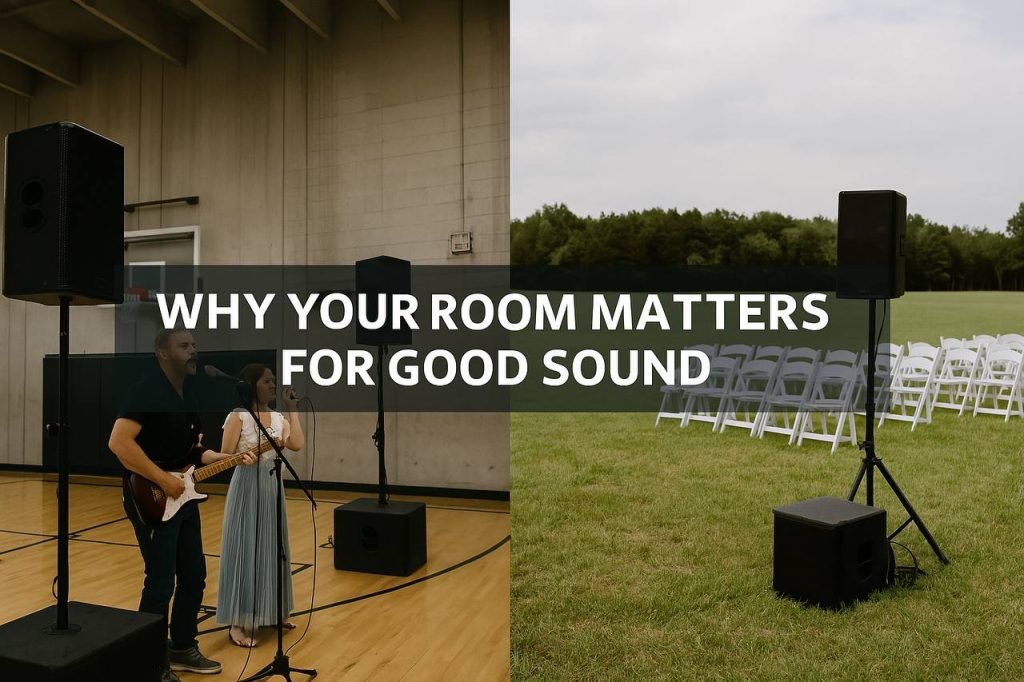
❤️ 🔊 🎶 🎉
This article was very informative! It made me realize how important it is to have quality sound and equipment at an event. I have used SoundMN for my wedding and it worked out great.